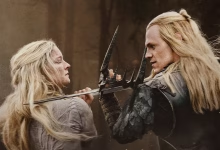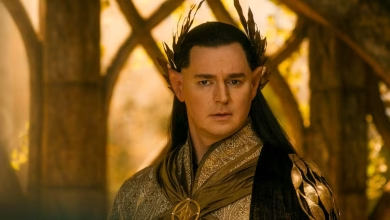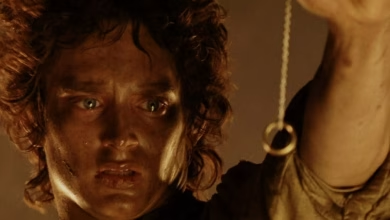Peter Jackson, Andy Serkis & Philippa Boyens Explain Why They’re Returning To Middle-Earth For ‘The Lord Of The Rings: The Hunt For Gollum’ 23 Years After Cannes Saved The Billion-Dollar Franchise
Since Warner Bros acquired rights to make more Middle-earth films based on J.R.R. Tolkien’s works and the canon established by New Line’s original trilogy, Peter Jackson and his Lord of the Rings cohorts Fran Walsh and Philippa Boyens hovered over the proceedings for a long time, as they mulled how to return, and much to involve themselves into another deep dive into Tolkien mythology.
As a business proposition, the allure is easy to understand: the two trilogies – the six LOTR and The Hobbit films — generated nearly $6 billion in worldwide grosses and enough Oscar gold to fill the lair of the dragon Smaug from 2012’s The Hobbit: An Unexpected Journey.
Go back 23 years, and the road was far more perilous when New Line founder Bob Shaye greenlit three LOTR movies that Jackson shot one after the other in New Zealand. One of the biggest gambles in film history, Shaye’s bet looked to be facing longer odds as bad buzz spread that LOTR would fail and it would not only doom New Line, but its offshore distribution partners. That was until Shaye had the idea to bring 25 minutes to Cannes for a premiere, and fly in the sets to replicate Middle-earth haunts like The Shire for a blowout bash at a nearby castle. Both Shaye gambles paid off: the bad buzz on the movie dissipated, and the question became, just how successful would these movies be? The principals revisited those moments several years ago for a Deadline Disruptors Magazine article to commemorate the 20th year of the release of The Fellowship of the Rings.
The next film iteration could have focused on several intriguing characters, including Aragorn, the courageous ranger but reluctant king played by Viggo Mortensen, or for that matter, Orlando Bloom’s elven archer Legolas. Or Ian McKellan’s journey as the grey wizard Gandalf. It turned out that the best path to mine Middle-earth mythology for the first of two new films was Gollum. Now we got glimpses during LOTR; the hobbit Sméagol killed his friend, who unfortunately fished the ring out of a lake, with Smeagol quickly coveting Sauron’s ring. We watched Gollum’s soul corrupted as he was driven mad by the ring. And we watched Gollum unwittingly save the world by biting the ring off of Frodo’s invisible finger on Mount Doom, and in celebration, slipping off a ravine and into the fires below, destroying himself along with the source of Sauron’s menacing power.
And so the choice for another movie became Lord of the Rings: The Hunt for Gollum. And the other surprise was that Andy Serkis, the actor who turned in those breathtaking Gollum performances, would helm the film. With every chance that cast members from the original will drop in, as Bloom’s Legolas did in The Hobbit.
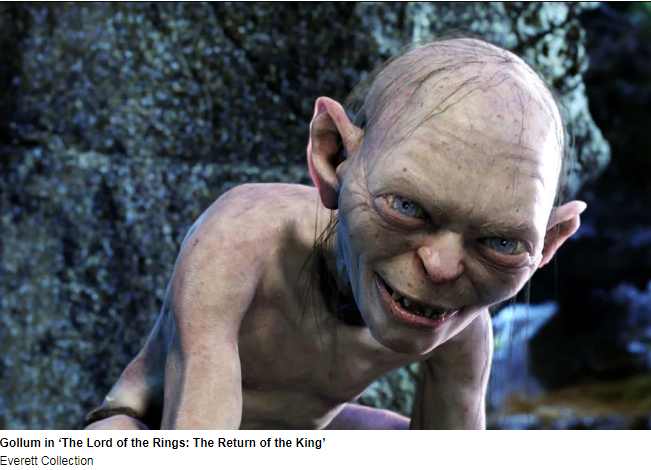
Not only was Serkis eager to reprise his role as the malevolent, tragic creature, but he also sparked to step up to his biggest challenge, as the film’s director. While Gollum’s backstory was dished in small doses during LOTR, Jackson told Deadline that there is much more ground to cover. Especially in the periods when Gollum was off the grid.
“The Gollum/Sméagol character has always fascinated me because Gollum reflects the worst of human nature, whilst his Sméagol side is, arguably, quite sympathetic,” Jackson told Deadline. “I think he connects with readers and film audiences alike, because there’s a little bit of both of them in all of us. We really want to explore his backstory and delve into those parts of his journey we didn’t have time to cover in the earlier films. It’s too soon to know who will cross his path, but suffice to say we will take our lead from Professor Tolkien.”
After Jackson undertook the arduous task of directing three LOTR rings in one big shoot, he tapped Guillermo del Toro to take the helm of The Hobbit trilogy. When that didn’t work out, Jackson stepped in and warmed to the challenge of the prequel story of Bilbo Baggins. It would have been a lot to ask him to direct another trio, and to him, the easiest part of the decision to dive back into Tolkien’s Middle-earth was to hand the baton to Serkis.
Serkis has been steadily building toward a career move like this. After he distinguished himself as second unit director for Jackson’s The Hobbit films, Serkis has helmed increasingly ambitious films — Venom: Let There Be Carnage, Mowgli: Legend of the Jungle — after starting with the touching love story Breathe. He’s wrapped his first animated film, an adaptation of George Orwell’s Animal Farm. Serkis has also continued to immerse himself in the technical aspects and performances of motion capture that made Gollum so breathtaking in the LOTR films. That included playing Caesar in the Matt Reeves-directed Planet of the Apes trilogy, and serving as Visual Effects Motion Capture EP on Guardians of the Galaxy Vol 3.

To Jackson and Philippa Boyens – who wrote the first six films with Fran Walsh – giving Serkis the job was the easiest decision they had to make.
“Andy was a joy to work with directing Second Unit on The Hobbit,” Jackson said. “He has the energy and imagination and, most importantly, an inherent understanding of the world of the story that is needed to step back into Middle-earth.
“We have collaborated on eight films together and each time it has been a fantastic experience. There’s no one in this earth better equipped to tackle Gollum’s story than Andy.”
Walsh and Boyens will write the screenplay, along with Phoebe Gittins and Arty Papageorgiou (who scripted the upcoming animated film Lord of the Rings: The War of the Rohirrim about the origins of Helm’s Deep). Jackson, Walsh and Boyens will produce the film, and the executive producers are Ken Kamins, with Serkis and The Imaginarium’s Jonathan Cavendish. Naturally, they will shoot in New Zealand, where Jackson built his production, postproduction and VFX factories with LOTR profits.
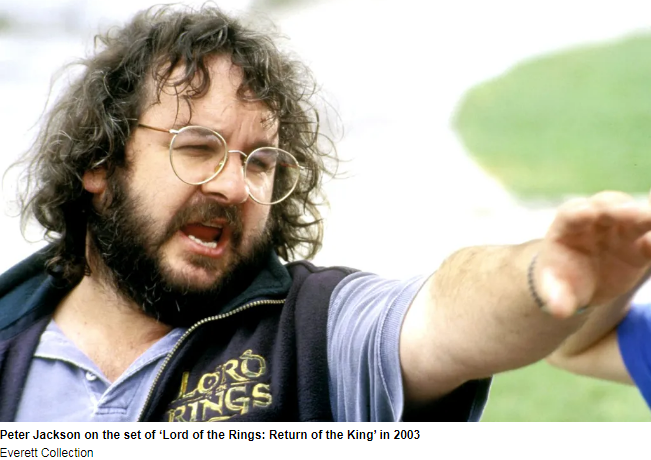
“Gollum’s story is one of the most compelling to us in terms of a character that we couldn’t go as deeply into as we wanted to before, which sounds strange when you say that, given how familiar he is to everybody,” Boyens told Deadline. “Gollum’s life span takes place in such an interesting period of Middle-earth. When the question was first asked, this was the first story we thought of. Because I can tell you, and people might not believe this, but we had zero expectations of going back to this. It wasn’t something we were looking to do, particularly. So when the question was asked, it was, what would draw you back? And it was about working with the people we we’re working with. It was also about the chance to work with Mike De Luca and Pam Abdy at the studio. Alan Horn is now back at the studio. It just felt right.”
That included the elevation of Serkis to the director’s chair.
“Pete has always admired Andy’s abilities as a director,” she said. “That’s why he asked him to shoot his second unit. It was kind of a no brainer. It was never about, why Andy? It was like, please, God, let Andy say yes. We wanted him to tell the story of Gollum and the hunt for Gollum as soon as we decided, okay, that’s the story. And Pete knew he didn’t want to direct go back into the world of Middle-earth again. [Peter] really enjoyed working with Kenji Kamiyama, who directed War of the Rohirrim. As soon as Pete decided, okay, I’m not going to direct it myself, and it’s going to be Gollum’s story, I swear to God, there was no one else but Andy Serkis.
“There’s nobody else you can think of who knows what goes into that character and we know what he brings to it and brings to the whole world of Middle-earth. Andy is going to have a really interesting take. It’s going to be his own take, because what we don’t want this film to be is just the fourth film in the trilogy. This film has to work in its own way. And that’s our job. That’s what we are going to have to be able to do. I know there’s plenty of people out there who will be like, oh no, why are they doing this? Why are they going back in? Well, that’s our job, to prove why we think that it’s a good idea.”
To Serkis, the opportunity brings his career full circle from when his Gollum portrayal put on the map a highly physical but difficult to characterize actor. Many recall that moment, sitting in the theater watching the second LOTR installment The Two Towers, when Gollum is having a bitter fight with himself over whether to obey Frodo and guide him to Mordor, or kill him and his sidekick Sam and take back the ring. It was a seminal moment for motion capture, in its way as much a seminal screen moment as the coffee shop scene in Heat between Al Pacino and Robert De Niro. Serkis has been part of the continued development of bringing creatures to life through acting performance and VFX, and he’s eager to put his own stamp on it over two decades after The Two Towers.

“I was absolutely floored,” Serkis told Deadline of the moment he got the call to direct. “They have done this to me before, and this had the same effect as when I got the call telling me I was going to direct second unit on The Hobbit. I was preparing to shoot my first independent film, something with three actors in two locations. And then it was just like, do you want to come direct the second unit on the biggest films in the world? I feel with them that there’s always this sort of psychic kind of connective moment that triggers something enormous. And that is the feeling I felt when I first met them and first started working with them. It was a very profound meeting of minds. I’m very honored that they’ve asked me to come back. I really am. I love them as filmmakers because they are honest. They always go for the truth. They are the most hardworking people on the planet, and their search for excellence never ends, and now I get to help reach that bar again. It was Philippa who first called me actually and said, look, this is what we’re thinking. And I was just flushed with a sort of, oh my God, I’m going back in there. Yeah, it was a terrific moment.”
It turns out that Serkis never really ventured that far from the character that most defines him.
“Gollum has always stuck with me throughout all of these years,” he said. “I’ve read audio books of the trilogy and the Silmarillion and The Hobbit, so Tolkien’s world has never left me in all of that time since we did the first films. And the character particularly has remained such an enormous part of my life. So it’s absolutely thrilling to be able to go back and do a deep dive into his world again, and specifically into Gollum’s psychology. I know we’re all interested in investigating on a deeper level who that character is, and on top of that, to be able to direct and hopefully create a film which has its place within the canon, but also something that’s fresh and new and a different approach.”
That includes taking advantage of the technological enhancements made in the last two decades.
“Mike, the thing is, at that time, the motion capture technology back then was pretty much restricted to interior sets and it was just motion capture at that time,” Serkis said. “And throughout the course of the evolution of the technology through the Apes movies, it changed. For instance, we were able to untether it from a volume and allow real performance capture, because in those three films, the first three films, the facial was all animated, copying my facial expressions. But it wasn’t driven by a performance capture, the delicacy and the nuance that was then able to be caught using head-mounted cameras. During the Apes movies is when the real experimentation began with going outdoors and shooting on location. And those are the big movies. And obviously Jim Cameron was working on his Avatar movies alongside Weta. They were pushing the nuances of facial performance with facial capture as well. Weta has been at the forefront of it particularly. And so it really has now reached a level where the authorship of the performances … allows you to actually internalize more without any sense of overacting, or the closeup is the detail within a closeup when you’re being very still. This is something that is clearly working at a much greater and a deeper level now.”
While it’s early going, Serkis sounded optimistic about working in appearances from some of the actors who brought LOTR and The Hobbit trilogies to life.
“That’s a difficult question to answer right at this moment in time, because we’re really in the nascent stages of what it is exactly where we’re doing, and where the story’s going to take us,” he said. “So I don’t want to commit anything right now. I mean, because it’s so raw and so raw and wriggling, and we are just literally having very early state script discussions and ideas of exactly where and how we’re going to drop anchor with the character and his journey and how he is or comes into contact with other characters, and the characters that we know and don’t know. So still, I would hate to say anything that’s going to commit us at this point, because it’s literally all up for grabs.”
Jackson, Serkis and cohorts also understand that Middle-earth has gotten crowded, what with The Lord of the Rings: The Rings of Power completing its first strong season at a reported $450 million investment by Amazon.
“There’s room enough for lots of people to exist within that space,” said Boyens, who didn’t watch the series. “We’ve never wanted to be the gatekeepers of Middle-earth. Sometimes other people put you in that position, but we don’t feel that. Honestly, I haven’t seen any of [the series]. I didn’t want to go watch because I genuinely didn’t want to be influenced. But I think it’s a fantastic era, as a choice. The making of the rings of power is a brilliant piece of storytelling. It’s a great era, full of fascinating characters.
“We have the right to the Lord of the Rings and the appendices, and that’s it,” Boyens said. “I would love to see that expand if there was the opportunity to do so, but there is so much that is in those three books. I know that especially hardcore fans of Professor Tolkien, they always get nervous that there’s only so much story. But look at War of the Rohirrim. It’s a page and a half at first glance in the books. But there are lots of threads throughout the book.
“War of the Rohirrim sits 200 years before the events of the ring, and it really is a standalone story,” Boyens said. “It was one of the reasons that I came to that story when we were looking to do something that would fit with anime. We wanted to do something that really had nothing to do with rings of power or Sauron or the Dark Tower or wizards, even. It’s a story about a people who are tearing themselves apart. So that felt like a really good fit, not only for anime, but to go into a new art form which anime is, and try and tell a story based in Middle-earth without touching really upon the live action films, if that makes sense. What it did do for us though was re-ignite that passion for the world and for the work of Professor Tolkien. It absolutely has done that, and I think it surprised us. We fell back into the world really easily and it just felt like a natural fit. It also showed us, it certainly showed me, how deep that mythology runs and how much story is left to be told.
“This is something that Professor Tolkien did himself and it is what worked so well,” she said. “He drew upon existing mythologies to create this world.”
Tolkien also gave permission for others to pivot.
“He wrote a letter to Milton Waldman in 1951 that said, ‘I would draw some of the great tales in fullness and leave … scope for other minds and hands, wielding paint and music and drama.”
